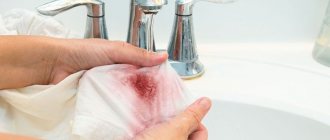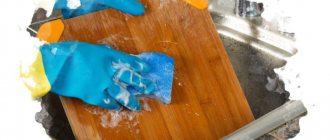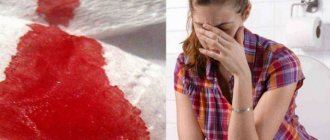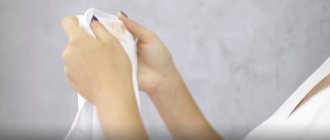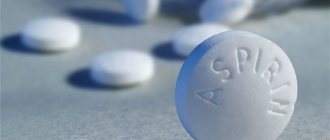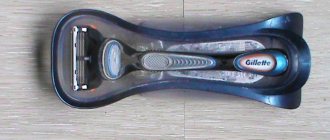During use, biological traces of human activity remain on the mattress - sweat, droplets of blood, small flakes of skin, hair, urine. Removing fresh and old stains can be difficult due to the size of the mattress. It cannot be washed in a washing machine or by hand. Here are some tips on how to remove blood stains at home using household chemicals or folk remedies that are available in every home.
Rules for removing blood from a mattress
To completely clean the product from blood stains, you need to follow several rules. They will allow you to remove blood from the surface of textiles easily and quickly. Basic Rules:
- Avoid using bleach and ammonia at the same time. When mixed, these substances release dangerous chemical vapors that negatively affect the human body. They can easily be poisoned;
- Do not treat contaminated surfaces with hot water. When the stain is exposed to high temperatures, the blood protein will coagulate, which will be difficult or completely impossible to remove;
- Treat the dirty surface with a generous amount of stain remover or home remedy, but avoid over-wetting. Excess moisture leads to the formation of mold and parasites;
- Use only white napkins or pieces of fabric to apply the product. Colored stains will not appear on the textiles, the fabric will not fade;
- when using toxic household chemicals, protect your respiratory organs with a mask and your hands with gloves;
- before starting cleaning work, test the product on an area of the mattress that is closed from outside view;
- remove traces of blood with stain removers containing protein components;
- Follow the manual instructions. Observe the proportions of the chemical substance, the time of exposure to contamination;
- After removing the dirt, dry the mattress thoroughly in the open air. You can use a vacuum cleaner or hot air hair dryer.
Helpful information
To avoid time-consuming cleaning of the sleeping area in the future, it is recommended to use a mattress cover. It is much easier to wash in a machine or by hand.
Tips for caring for a mattress stained with blood:
when working with someone else's blood, you need to use rubber gloves, avoiding contact of biological fluid with open skin or mucous membranes;- you need to start cleaning as early as possible; the longer the blood remains on the mattress, the more difficult it is to remove it;
- even fresh stains cannot always be removed the first time; complete cleaning will require at least 2 procedures;
- if a new cleaning agent is used to get rid of blood stains, then it should be tested on an inconspicuous area and monitor the reaction of the fabric;
- To prevent new stains from appearing on the surface of the product, only white rags are used for cleaning.
Preparatory stage
Before performing the cleansing procedure, wet the blood with cool water. The protein components of the blood will become wet and will be easier to remove.
Attention! Apply cool water carefully and do not rub or smudge marks. Move the napkin around the dirt. This will help avoid divorces and increasing boundaries.
You can remove excess liquid with a dry cloth or towel. Repeat the procedure several times. Recent period blood on the mattress may disappear completely. Old ones will require additional intervention with household chemicals.
Preparation
Before you start cleaning your mattress from blood stains, you need to do some preparation. To do this, you will need several clean microfiber or terry cloths; you can use paper towels folded in several layers.
Sequencing:
- Moisten a napkin in cold water and apply the wet cloth to the stain.
- Then you need to blot the mark with a dry cloth, the moisture and diluted blood will be absorbed into the fabric.
- Do not rub the mattress, as this will only smear more blood on the upholstery; you should carefully blot it.
- Repeat the steps described above until red streaks no longer appear on the dry cloth/paper.
Advice: Never wet the stain with hot water, as the blood proteins will coagulate and it will become even more difficult to wipe off the stain.
Preparing the mattress for cleaning makes sense if traces of blood are fresh. If the stain has already dried, then such treatment will be useless.
What types of cleaning are there?
There are several ways to remove dirt from a mattress. Choose the type of cleaning depending on the level of contamination and how old the stain is.
Types of cleaning:
- treatment of areas contaminated with household substances. Hydrogen peroxide destroys blood protein compounds and cleans the surface. Hydroperite, ammonia, and white table salt have properties similar to peroxide. Destroy blood fractions of protein and iron;
- dry exposure of the stain to chemicals capable of removing blood - powders, rollers, sprays;
- removing dirt at home with wet solutions with citric acid, baking soda, ammonia, salt, aspirin;
- cleaning the surface with liquid solutions of household chemicals. Stain removers, biological gels with protein components, products with a whitening effect, stain removal liquids.
Attention! Professional dry cleaning gives a 100% effect. This service is available in large populated areas, but is not cheap.
Cleaning colored and white mattresses
A white mattress can be cleaned with any available product that does not leave streaks. Stains on a colored product must be removed with care so as not to damage the color of the textile. When removing stains from a colored mattress, use stain removers designed for colored products. Stain removers with chlorine, bleaching effect, whiteness have a detrimental effect on dyed fabric. They spoil the colors, thin the fibers, and leave white spots.
The best and most delicate stain removers for colored woven surfaces are oxygen ones. Environmentally friendly, removes specific contaminants from urine and blood well. Eliminate unpleasant odors, penetrate deeply into the fibers of the fabric without damaging it. Among home remedies, table salt, baking soda, and laundry soap do not affect the color. Table vinegar diluted with water removes fresh and old stains well and revives the brightness of colors. A mixture of laundry soap and glycerin does not affect the color color and effectively removes old dirt.
Features when removing fresh and old blood stains
Recent blood stains are easier to remove than old ones. Over time, the protein and glandular components of the blood dry out, penetrate more deeply and become fixed in the tissue fibers. In some cases, if there is slight contamination with fresh blood, you can clean the mattress with cold water or home remedies that are available in any kitchen. To remove old dried blood, you need to use cleaning stain removers and products that dissolve protein compounds. Suitable household products include ammonia, hydrogen peroxide, a thick mixture of baking soda and table salt, and laundry or tar soap.
How and with what to remove fresh blood stains from a mattress
Fresh blood stains can be removed easily and simply using available means. There are several effective ways to remove blood from a mattress. It is important not to allow the stain to dry out completely and for the protein and ferrous fractions to penetrate deeply into the textile coating. The main condition for cleaning is not to apply hot water to the dirt.
Sea or table salt
Sea salt and table white salt without additives have similar properties. The salt contains sodium chloride, which destroys protein compounds in the blood and prevents the oxidation of iron-containing hemoglobin. For cleansing, you can use salt separately or together as a mixture. The principle of removing blood is very simple - the dirty area is sprinkled with salt. Algorithm of actions:
- Before cleansing with sea (table) salt, wet a clean sponge or brush with cold water and rub the stain with gentle circular movements. If the stain is small, use a soft-bristled toothbrush. This will avoid expanding the boundaries of pollution and stains;
- Apply salt to the moistened stain, carefully rub the salt grains onto the contaminated surface;
- cover the treatment area with cling film or a plastic bag;
- leave for 30 minutes;
- Shake off any remaining substance, rinse the cleaned surface well with cold water, then dry.
For cleansing, you can use a brine solution made from sea and table salt. Dissolve 30-35 g of ordinary salt in a small amount of cold water, add a little sea salt, apply the composition to the blood stain.
Depending on the freshness of the stain, you can choose a dry or wet cleaning method. Apply a clean white napkin several times to completely fresh blood to remove as much liquid as possible from the surface of the mattress. In this case, dry cleaning with a powder of 4 parts starch and 1 part salt will help. Spread the powder evenly on a dirty surface, rub and leave for 3-4 hours. The mixture will absorb blood residues. Remove the powder with a vacuum cleaner or using a soft-bristled clothes brush.
Wet purification of blood substances involves the use of liquid solutions.
Dishwashing liquid
Gel-like products for removing grease from dishes are good at removing blood stains. Add a tablespoon of the product to 200 ml of cool water, stir, and whip up the foam. You can get rid of small droplets of blood with 2-3 drops of gel per 200 ml of water. Apply the product to the blood with a sponge, cotton pad or brush. Rub the dirt lightly, then remove any excess with a clean cloth. Rinse off any remaining solution with cold water. Dry the surface with hot air from a hair dryer or in the sun. Cold water can be replaced with ice cubes. Wipe the dirt with ice, apply a drop of gel, spread the product over the dirt with a brush or your fingers. After 20-30 minutes, blot the treated area with a damp cotton pad, clean napkin or towel.
Attention! This cleaning method is suitable for delicate silk and satin fabrics with delicate, fine fiber weave.
Ammonia
Removing stains with ammonia is suitable for textiles made of natural wool, smooth cotton fabric, terry and fleecy fabric.
- Before working with ammonia, cover your respiratory tract with a mask and protect your hands with gloves.
- Take 1 part ammonia and 4 parts water, combine and stir thoroughly.
- Apply the solution to the stain using any sprayer (spray bottle, spray bottle). Moisten the contaminated area well.
- After 30-40 minutes, remove the composition with a damp cloth.
Attention! The use of ammonia is strictly contraindicated for people with upper respiratory tract diseases, breathing problems, and chronic asthmatics.
Baking soda
Baking soda or sodium bicarbonate is an inorganic chemical compound. A universal product and a leader among other substances for removing dirt and stains. Use baking soda in a solution with water. Add a teaspoon of cold water to a tablespoon of baking soda and stir until a thick mushy mass appears. Apply the mixture to the dirty area, leave for several hours, remove excess with a vacuum cleaner or brush off with a textile cleaning brush.
Baking soda works well to neutralize blood stains. If necessary, repeat the procedure again.
Hydrogen peroxide solution
Hydrogen peroxide is a colorless liquid, soluble in aqueous media, alcohol infusion, and ether. Stops bleeding, disinfects wound surfaces. Widely used in medicine. Peroxide has bleaching properties and effectively removes blood stains and stains. Sequencing:
- soak a cotton pad or a piece of clean white cloth in a 3% peroxide solution and wipe the contaminated area in a circle. Change napkins and discs until the scarlet foam becomes completely pale;
- leave the solution on the stain for 7-10 minutes;
- repeat the procedure several times until the stained area is completely whitened.
Attention! Hydrogen peroxide is an aggressive substance! On thin, delicate fabrics, use no more than two or three times. The product effectively acts on old dried stains.
Rules for caring for mattresses
In order for the mattress to serve faithfully for many years, you should follow the recommendations that will allow you to use it for a long time:
- Use special warm sheets with elastic bands. This will protect the bed from stains, so it’s much easier to wash them off than from a mattress.
- Try not to eat in bed.
- Turn it over regularly to avoid pressure on one side. The load on the mattress should be uniform.
- The product should be dried naturally, avoiding direct sunlight.
- Ironing the mattress material is not recommended unless the cover is removable. In this case, ironing is permitted even with the steam function.
- It is necessary to ventilate at least once every six months or after each cleaning to avoid the appearance of an unpleasant musty smell of the filler.
- It needs to be vacuumed periodically.
Despite the fact that the mattress is protected from stains by bedding, sometimes stains of various origins still appear on it. Tips and videos on how to remove blood from a mattress will help you solve the problem of cleaning it in a matter of minutes.
How to Remove Old Blood Stains from a Mattress
Over time, fresh stains become old. Contamination penetrates deeper into the fiber weaves, damaging them. Protein and iron compounds in the blood turn into rust, which is difficult to remove. Use substances and compositions with a strong bleaching effect.
How to prepare dried blood for removal
Before the procedure, soak dried blood stains with cold water with the addition of shavings from laundry soap and ammonia. For 1 liter of water there are 10-12 ml of ammonia, a teaspoon of soap shavings for household needs. Moisten the contaminated area several times until the blood is completely soaked. Use cotton pads, a napkin, or a towel to periodically blot the dirt. Gradually, the stain will begin to fade, and the softened compounds will easily transfer from the surface of the mattress to the napkin. To completely remove blood components, use additional home or industrial chemicals.
Boric acid
Boric acid is sold in pharmacies in the form of a powder or solution. A white, colorless substance, used as an antiseptic, it separates proteins into small fractions. It has a gentle, non-aggressive whitening property. Works effectively in cold and hot water.
- Dissolve a tablespoon of acid in a glass of hot water, cool to room temperature.
- Soak a clean napkin, cotton pad or towel in the solution and squeeze out excess liquid.
- Cover the blood stain with a wet cloth and press it to the surface of the mattress.
- Wait until completely dry.
- Wash away any remaining acid with a wet sponge.
Use boric acid on any fabric, textured or smooth. One application of the solution is sufficient to completely remove dirt.
Laundry soap
How to wash blood from a mattress with laundry soap? A universal substance to combat dirt on any textile and fabric. Contains natural ingredients - fatty acids, alkali, glycerin, natural oils, salt. To get a positive effect, use a concentrated soap solution.
- Grate a piece of laundry soap on a fine grater.
- Add a small amount of warm water to the shavings until you obtain a liquid slurry. Beat the foam.
- Using a sponge, apply the foamy mixture onto the remaining blood and spread evenly on the cloth in a thick layer of 1.5-2 cm.
- Leave the composition for 5-6 hours.
- Rinse off any remaining soap thoroughly with warm or cold water.
In some cases, a yellow spot remains at the site of contamination. Repeat the procedure again or use household chemicals with a bleaching effect.
Ammonia
Use ammonia in several combinations. Any one gives a positive effect. Alcohol can be used to remove old dried blood from textiles. Application:
- Mix a teaspoon of ammonia and 2 tablespoons of ethyl (vodka) together. Treat stains with the solution using a soft sponge or rag;
- Rub the stained area with a soft brush in a circular motion;
- wait 10-15 minutes;
- Rinse the treated area thoroughly with clean water.
Ammonia does not damage fabric fibers, is suitable for any type of upholstery or cover, and does not leave an odor.
A mixture of ammonia or ammonia (a tablespoon) with water (3 cups) and dishwashing gel (a few drops) removes traces of blood well. Apply the foam solution to the dirt and cover with a dry towel. After 45 minutes, rinse with water. Dry.
Lemon acid
Lemon acid is a natural bleach. Use on light, snow-white textiles. Working solution: a tablespoon of lemon and half a glass of water. Stir until the acid crystals are completely dissolved in the water. Mode of application:
- soak the cloth in the solution, carefully treat the blood trail;
- cover the stain with a damp cloth and leave for 2 hours;
- As it dries, moisten the fabric with the solution;
- Wipe the dirty area several times to remove any remaining blood.
Attention! If you don't have citric acid or juice on hand, use table vinegar. These substances have the same whitening effect.
Aspirin
This pharmaceutical drug destroys the protein structure of the blood well. Crush 2-3 aspirin tablets into powder, dissolve in a glass of water, mix the composition thoroughly. Apply the solution to the blood droplets and cover with a dry, clean towel or napkin. After an hour, wash the treated area with soapy water and rinse with water. Dry.
Detergents and bleaches
Household chemicals for removing stains and dirt from woven surfaces are available in two variations - for dry or wet stain removal. Gel, liquid, powder, dry chemicals are designed to remove dirt, unpleasant odors, refresh and disinfect fabrics. Each detergent has its own unique formula and is designed for specific purposes. Bleach differs from each other in the composition and concentration of the aggressive substance. Chlorine and phosphate in detergent chemicals behave more hostile to textile fabrics than products based on active oxygen. Oxygen-based bleaches are intended for the use of plain and colored fabrics; they are gentle on the fabric.
How to wash with detergents, powders and bleaches
Not everyone trusts traditional methods of removing contaminants or simply does not want to bother with preparing various solutions. In this case, you can purchase stain removers, which are sold at any household chemical store.
Below we will consider the most effective and popular means.
Vanish. Available in powder and gel form.
It is considered one of the best means for removing any stains, including blood. To remove stains with it, you need to generously moisten the fabric with warm water, and then pour the powder onto the material, lightly rubbing it in. Leave for 20 minutes and wipe off the grains with a cloth soaked in water.
Dirt is cleaned in the same way using a gel-like product. Such stains usually disappear after the first use.
Antipyatin. Available in the form of soap or gel. Actively affects the stain, dissolving it, so that the darkening is removed the first time.
The method of using the gel is the same as for “Vanish”, and in the form of soap - as for ordinary laundry soap. Afterwards, you just need to wipe off the residue with a damp cloth.
Sarma. It is also an excellent solvent for stubborn stains, the effect is immediately visible. Directions for use: pour the powder onto the wetted area of the mattress and leave for 20 minutes. Then clean with a damp cloth.
Amway stain removers. They are made in the form of a spray, which makes the entire process of removing contaminants much easier. Despite the fact that it is cheaper in price than Vanish, it copes with stubborn stains no worse than the advertised product.
To remove blemishes, you just need to spray it on the problem area and leave it for 15-20 minutes so that it is absorbed into the deep layers of the tissue. And then blot off excess moisture with a napkin.
Special preparations for removing bloody marks
Before cleaning blood from your mattress, choose a cleanser. Homemade folk or household chemicals. Selection and application:
- Remove fresh blood with dry cleaning agents. Rollers, pencils, and powder formulations are appropriate on thick mattresses that are difficult to dry at home;
- remove old, heavily absorbed stains with liquid or gel-like compounds. Before removing old dirt, it needs to be soaked;
- follow label instructions. Keep the composition on the contaminated area for a precise amount of time;
- Do not mix different cleaning products together. An item can be damaged due to an aggressive chemical reaction;
- use gentle chemicals without caustic toxic components;
- Avoid bleach and aggressive acids.
A review of inexpensive, effective stain removers that can clean the surface of the mattress from blood stains and stains.
dr beckmann stain remover roller
Gentle, oxygen roller for all types of fabric. Designed to remove stubborn stains on light, colored, and dark fabrics. Does not contain phosphates and chlorine. Biodegradable, universal, suitable for synthetic and natural fibers.
sonett spray
Consists of glycerin, essential oils, citrate, ethanol, water. Designed to remove heavy dirt. Does not damage thin natural fabrics (silk, satin, wool). Retains color.
clean home
Removes stains and whitens. It has a unique formula, does not damage textile fabric, retains colors, and eliminates unpleasant odors. Combines harmoniously with any cleanser.
If none of the methods help
If conventional cleansing products do not help, pay attention to substances with an aggressive formula. You can use glycerin frozen in the refrigerator. Fill the stain with a thick mixture, leave for 30 minutes, brush off the dirt, remove any remaining composition. Glass washing liquid has a high degree of aggression and removes stains from woven surfaces well. If none of the methods help and the remaining dirt is not completely removed, have the mattress professionally dry cleaned.
Professional dry cleaning
Dry cleaning is usually used only in cases where cleaning the stains using home methods is not possible.
It is best to hand over not the entire mattress, but only the cover, since solvents used in dry cleaning can negatively affect the filling.
The effectiveness of such stain removal is quite high, but there is always a risk of spoiling the material with a new type of stain or smell from the product. Therefore, before taking drastic measures, it is advisable to first try more gentle methods.
The cost of dry cleaning directly depends on the degree of the problem: the more complex and larger the stain, the more strongly bringing it back to its original form will affect your family budget.
Tips to prevent new stains from appearing
To maintain a mattress in good condition, you need to properly care for it:
- turn the mattress from one side to the other more often;
- use the item for sleeping and relaxing;
- remove dust with a vacuum cleaner once a month;
- protect the product with thick fabric covers;
- maintain personal hygiene on critical days;
- avoid drinking and eating in bed;
- Periodically ventilate the product and place it in the sun.
What not to do and why
When removing blood stains at home, do not violate generally accepted recommendations.
- Apply the cleaner to the stain without going beyond its borders.
- Do not rub the dirt to avoid increasing it.
- Move in a circle, from the edges to the center.
- Use only cold water to soak marks. Hot water promotes the coagulation of white glandular components of the blood.
- Thoroughly clean the treatment area of acid and powder cleaners. Remove liquid detergent with warm water, brush off dry detergent with a clothes brush.
- Use clean, soft white napkins, towels, or pieces of cloth. Do not scrub the stain with a stiff-bristled brush, as this may damage the weave of the fibers.
After using folk and industrial chemicals, the cleaned textile surface of the mattress looks clean and fresh.
Cleaning Rules
A sofa is not a cheap thing, and buying a new one every time because complex stains have appeared on it is an unforgivable luxury.
In order to remove blood stains from a mattress at home, you just need to follow some recommendations:
- Do not use ammonia and bleach together. These products, when interacting, emit heavy vapors that can harm human health.
- You cannot use hot water, otherwise you will not be able to remove the blood from the bed, and the item will be damaged.
- Do not apply too much of the solution to the stain, otherwise the solution will take too long to dry. There is also a risk of mold and parasites appearing on the surface.
- When using chemicals, alkalis and other aggressive agents to wash menstruation on the mattress, wear gloves so as not to damage the skin of your hands.
- A mask will not be superfluous; wear it to prevent substances from getting on your face or into your respiratory tract.
- When removing delicate stains on the bed, use only protein-based stain removers.
- After removing blood stains, the mattress must be thoroughly dried.

